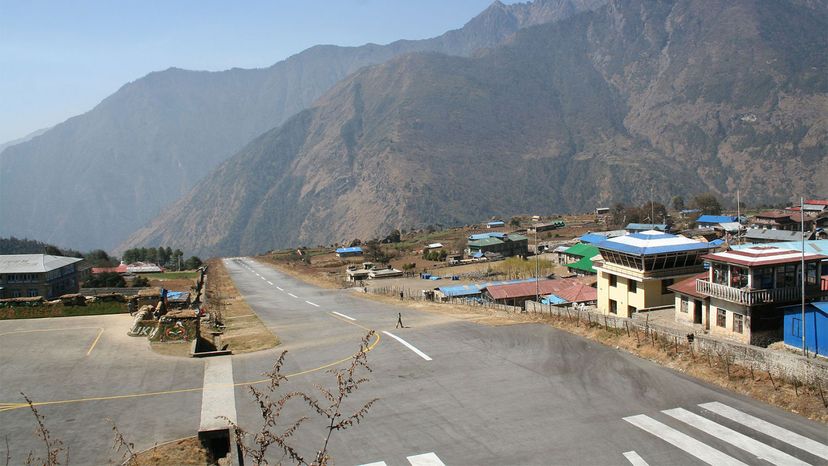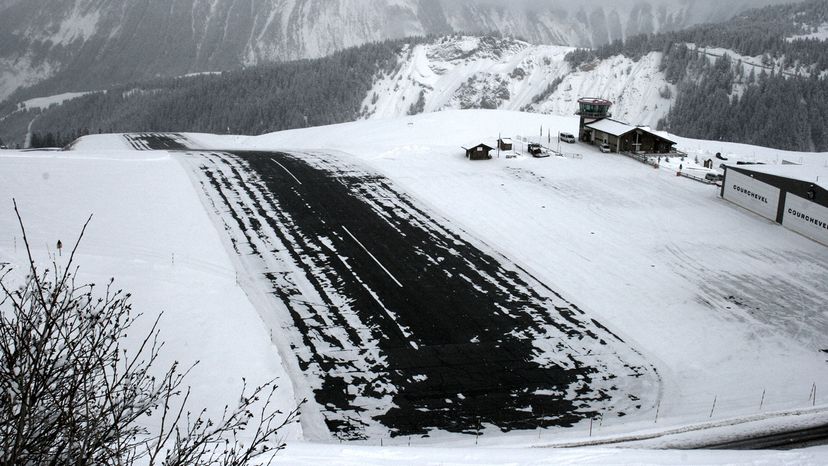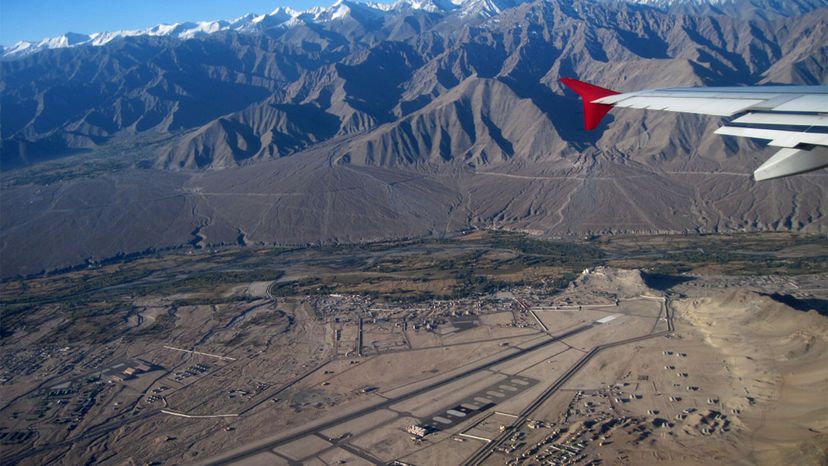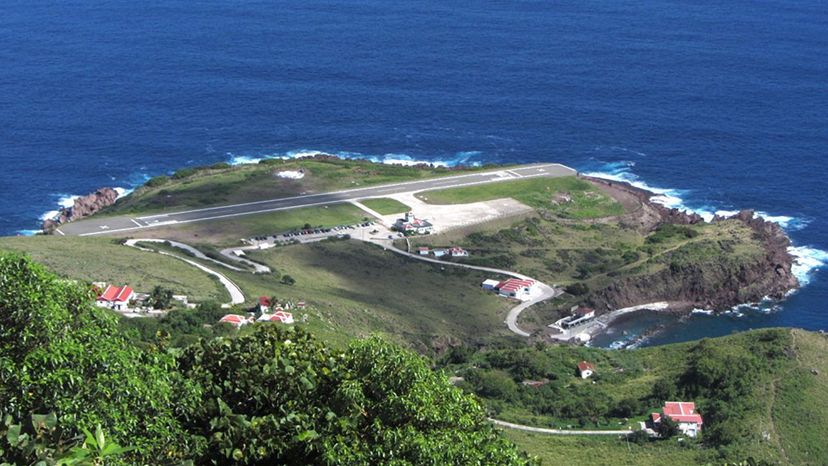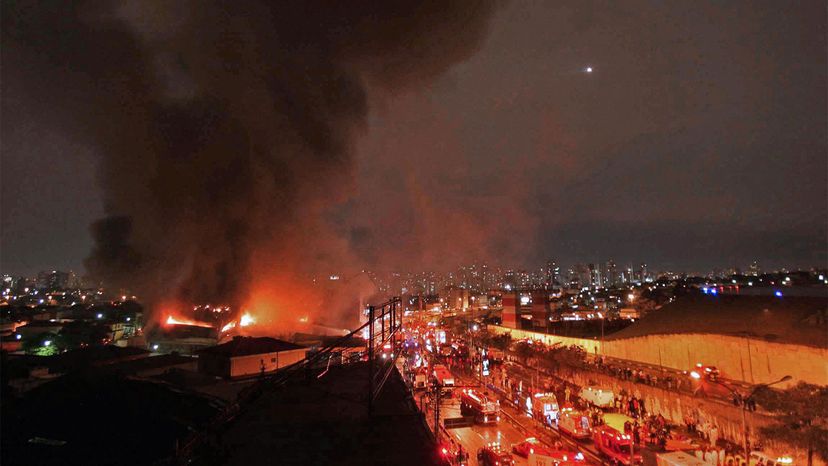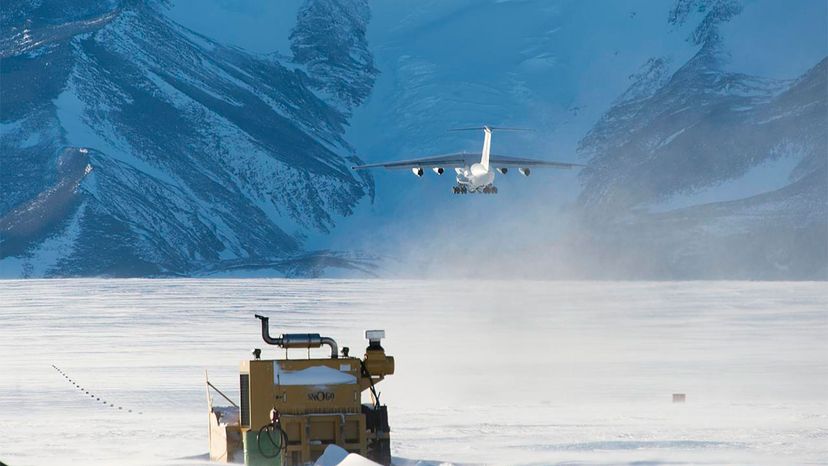A commercial airline lands at Princess Juliana International Airport in St. Maarten, flying close enough to the beach that sunbathers get a good sandblasting. Adam Mukamal/Getty Images
Thanks to aircraft technology, more efficient air traffic control and better training for pilots and mechanics, air travel has become safer. The number of fatal accidents involving jet airliners worldwide dropped from 40 per million flights in 1959 to just 0.05 deaths per million flights in 2021, according to global data gathered by aircraft manufacturer Boeing.
Though airline travel is extremely safe, mishaps do still occur. So what’s the most dangerous airport in the world? Some say it’s Lukla Airport (Tenzing-Hillary Airport) in Nepal because pilots fly in at higher speeds. One of the riskiest parts of any flight remains the final approach and landing. Those phases account for more than half of all fatalities, even though they account for just a few minutes out of a typical trip.
But it can be hard to quantify how these different factors, like an extremely short runway or mountainous terrain, influence what we consider the most dangerous airports in the world. So we present a list of 13 airports around the world, in no particular order, that test pilots’ skills and preparation.
Contents
How Pilots Navigate Dangerous Airports
Barra International Airport, Outer Hebrides, Scotland
Tenzing-Hillary Airport, Lukla, Nepal
Toncontin International Airport, Tegucigalpa, Honduras
Princess Juliana International Airport, St. Maarten
Kansai International Airport, Osaka, Japan
Courchevel Altiport, Courchevel, France
Kushok Bakula Rimpochee Airport, Leh, India
Paro International Airport, Paro, Bhutan
St. Helena Airport, St. Helena
Juancho E. Yrausquin Airport, Saba
Gibraltar International Airport, Gibraltar
São Paulo Congonhas Airport, São Paulo, Brazil
Phoenix Airfield, Ross Island, Antarctica
How Pilots Navigate Dangerous Airports
Pilots have to be especially careful when they land at some airports, especially those in areas where location, terrain, weather conditions and/or quirks in design can make their job even more difficult.
“Obviously, when you go into those airports, you do your homework prior to going in,” explains Gregory Zahornacky. He’s an assistant professor in the Aeronautical Science department at Embry-Riddle Aeronautical University and a former airline captain with more than 15,000 hours of flying time.
The Most Challenging U.S. Airports
Zahornacky says that the U.S. has some airports that are challenging for pilots, and they’re some of the busiest airports in the country.
New York’s LaGuardia Airport has earned that reputation because of its short runways, while Ronald Reagan Washington National Airport also has that issue, plus a difficult location. “You have the Anacostia and the Potomac rivers,” Zahornacky says. “You have all that restricted airspace in there, too, with the Pentagon and the White House.”
There are places such as Denver International Airport, one of the biggest airports in the world, where pilots have to be aware of how the elevation affects the plane’s performance, Zahornacky notes.
He also mentions the “precipitous terrain” at Roanoke-Blacksburg Regional Airport as challenging for pilots. The latter is in a mountainous area with unpredictable winds and at times intense fog, according to an article from the Airplane Owners and Pilots Association, a group for pilots of smaller general aviation planes.
Experience Matters
Airlines provide pilots with extensive information about airports with such challenges and require them to review it before flying to them, according to Zahornacky. In some cases, airlines require pilots to have special training to land.
“You need to get the experience with someone who has already gone in there,” he explains.
1. Barra International Airport, Outer Hebrides, Scotland
This small airport is one of the most dangerous airports because of the sandy runway. Journalist Mikhaila Friel flew out of Barra International and called the experience strange but calming because she was able to walk around a desolate beach before she hopped on a plane.
But if you’re not into small planes, then you might not want to schedule a flight out of this airport.
“When we arrived back at the airport, the other 13 passengers due to travel on our flight had arrived and were sitting in the waiting area,” Friel wrote. “While the plane had 19 seats, Loganair allows a maximum of 15 passengers and two pilots to allow for extra fuel capacity, as there are no refueling facilities at Barra Airport, a spokesperson for the airline said.”
2. Tenzing-Hillary Airport, Lukla, Nepal
The runway at Tenzing-Hillary (Lukla) Airport in Nepal seems to drop off into nothing. Wikimedia Commons (CC BY SA 4.0)
Built in 1964 under the guidance of Sir Edmund Hillary, this airport provides access to the base camp at Mt. Everest, according to Yahoo News, which also notes that its elevation of 9,383 feet (2,860 meters) means that pilots have to fly at higher speeds to contend with lower air density.
The airport’s tiny 1,729-foot-long (527-meter-long) runway is on a cliffside and slants upward to help planes slow down, according to an August 2022 CNN story.
Additionally, as a government report on a 2017 crash there noted: “Meteorological condition of Lukla is very unpredictable.” Here’s the airport’s profile in the Aviation Safety Network database.
3. Toncontin International Airport, Tegucigalpa, Honduras
The airport’s runway is one of the shortest for big commercial jets and planes landing must also carefully maneuver wind and mountains.
4. Princess Juliana International Airport, St. Maarten
Landing at the airport (which opened its present location back in 1964) on this Caribbean island means flying in over a public beach, low enough that “sunbathers get a good blast of wind and sand whenever a plane arrives,” according to travel website Fodors.com. Despite appearances, there’s never been a landing accident at Princess Juliana, according to the Aviation Safety Network’s profile.
5. Kansai International Airport, Osaka, Japan
“It is completely safe to fly into Kansai International, and there is absolutely no chance that this airport is ever going to sink under water,” said a spokesman in 2001. However, Kansai has sunk almost 40 feet since it opened in 1994, and more sinking is possible in the future.
6. Courchevel Altiport, Courchevel, France
The snow-covered runway and apron at Courchevel Altiport stands at an altitude of 6,561 feet (2,000 meters) in the French Alps. Wikimedia Commons (CC BY 2.0)
Located in the French Alps, Courchevel Airport has a runway that’s just 1,762 feet (537 meters) long, with a steep 18.6 percent uphill gradient to help planes decelerate as they land.
To use the airfield, pilots must have special qualifications, including passing a test by a mountain flight instructor, and keeping up their rating by flying there at least once every six months. Flying magazine notes that “caution, dedicated training, and careful planning are key to enjoying this runway cradled in the Alps.”
7. Kushok Bakula Rimpochee Airport, Leh, India
Kushok Bakula Rimpochee Airport in Leh, the capital of Ladakh, India, is available for morning landings only due to strong afternoon winds. Wikimedia Commons (CC BY 2.0)
Located in the city of Leh, Kushok Bakula Rimpochee Airport — situated 10,682 feet (3,256 meters) above sea level — is surrounded by mountains and is beset by such strong winds in the afternoons that flights with specially trained pilots land only in the morning.
According to the airport’s Aviation Safety Network profile, the airport hasn’t had a fatal accident in its vicinity since 1979 when it was a military base.
8. Paro International Airport, Paro, Bhutan
As the only airport for international flights for the small nation situated in the Himalayas, Paro has an elevation of 7,364 feet (2,244.5 meters) above sea level. Pilots can only land in good visibility, and the aircraft must navigate between hills and over houses before making a curve to get to the runway, according to CNN and Forbes.
In 2020, only 20 pilots had permission to land there, but neither the Aviation Safety Network nor the Bureau of Aircraft Incidents Archives show any accidents.
9. St. Helena Airport, St. Helena
This remote British island in the Atlantic is the place where Napoleon went into exile after his final defeat at Waterloo.
It wasn’t until 2016 that St. Helena completed its own airport, but concerns about wind conditions caused by the island’s rugged topography required additional testing and delayed its opening until 2017.
Only pilots with special training can land on St. Helena’s 6,070-foot (1,850-meter) runway. There haven’t been any reported mishaps.
10. Juancho E. Yrausquin Airport, Saba
The runway at Juancho E. Yrausquin Airport in Saba is so small that only specially trained pilots are allowed to use it. Wikimedia Commons (CC BY SA 2.0)
This tiny island in the Caribbean had its silhouette used in the original “King Kong” movie in 1933. The airport has the world’s shortest commercial runway, just 1,300 feet (400 meters) in length, with sheer drops into the sea at either end, and only an elite group of specially trained pilots land there.
T-shirts emblazoned with the slogan “I Survived the Saba Landing” have long been a popular item on the island, but the Aviation Safety Network’s profile doesn’t list any actual accidents.
11. Gibraltar International Airport, Gibraltar
This airport, built in 1939, has a 5,500-foot (1,676-meter) runway with water on both sides, which compels pilots to hit the brakes quickly after landing. But to complicate things even more, the runway intersects with a busy street that closes whenever a plane is landing.
While that might seem hazardous, the airport has a remarkably good safety record, with no landing accidents since August 1951, according to the Aviation Safety Network’s profile.
12. São Paulo Congonhas Airport, São Paulo, Brazil
A TAM airlines A320 passenger aircraft crashed while attempting to land at Congonhas airport in São Paulo, Brazil, July 17, 2007. The plane with 187 people on board crashed into a gas station after skidding off a wet runway. ERNESTO RODRIGUES/AFP via Getty Images
The growth of São Paulo has enveloped this airport, built in 1936. This means aircrafts are flying over rooftops practically until they reach the runway. The airport was the scene of a July 2007 airliner crash that killed all 187 people aboard and 12 people on the ground.
Since then, the airport has implemented safety improvements, including drainage grooves in the runway surface to reduce slipperiness and the installation of an Engineering Material Arresting System (EMAS) to prevent aircraft from overrunning the runway.
13. Phoenix Airfield, Ross Island, Antarctica
An Ilyushin Il-76 of Air Almaty taking off from Phoenix Airfield. Wikimedia Commons (CC BY 2.0)
The other airports on this list have paved runways. But at Phoenix Airfield, created in 2017 to provide access to the U.S. research center at McMurdo Station, on the south tip of Ross Island, pilots land on a runway made of compacted snow, which forms a hard surface that won’t easily melt.
Besides the unusual surface, pilots have to contend with unpredictable weather and nighttime landings without runway lights during the southernmost continent’s six months of darkness each year. Australia recently abandoned a plan to build a paved runway in Antarctica because of environmental concerns.
Despite the risks of flying in Antarctica, the last fatal landing accident anywhere on the continent was in 1966, according to the Aviation Safety Network database.
>>> Read full article>>>
Copyright for syndicated content belongs to the linked Source : How To Stuff – https://science.howstuffworks.com/transport/flight/modern/scariest-airports-landings-takeoffs.htm




















